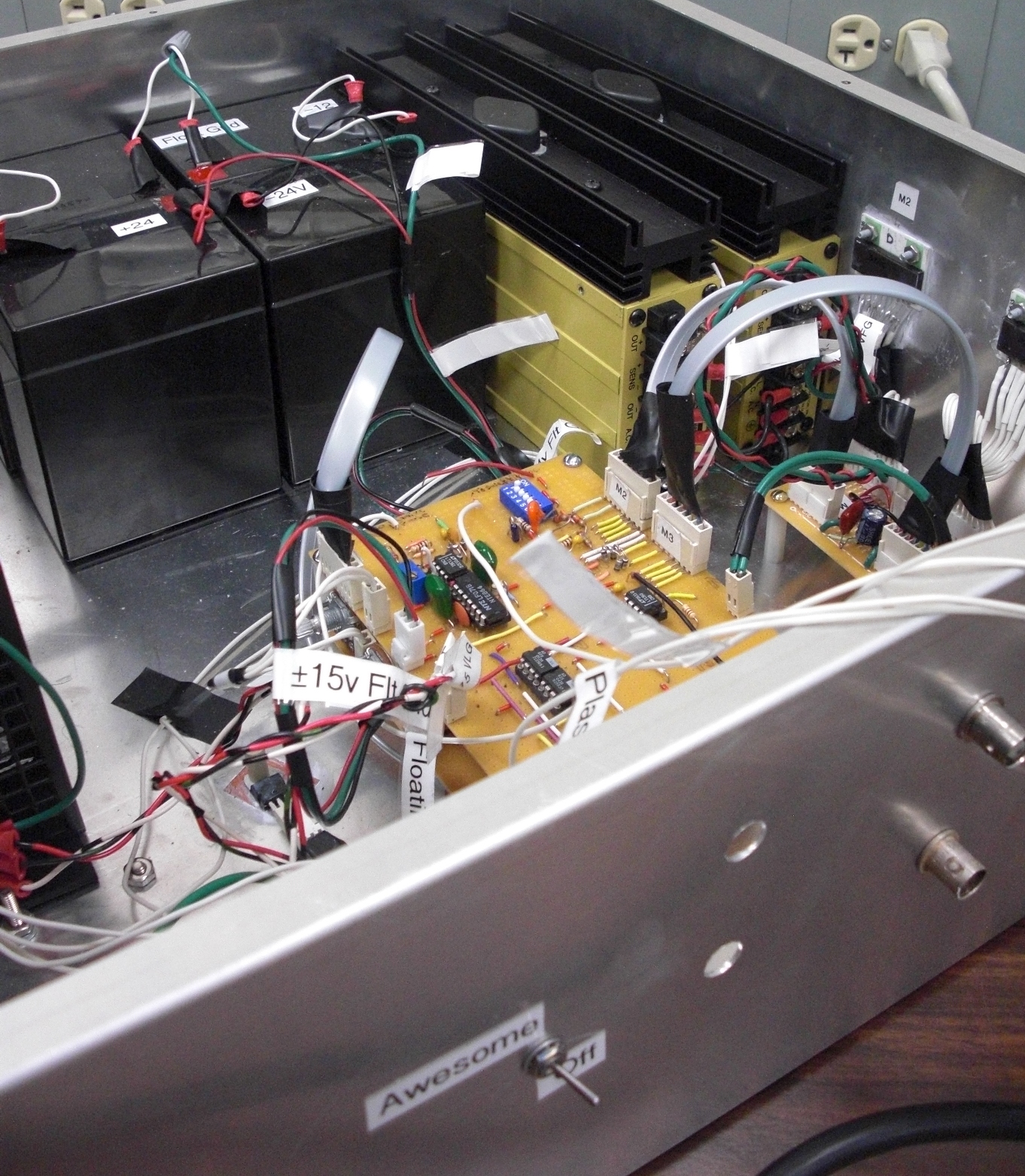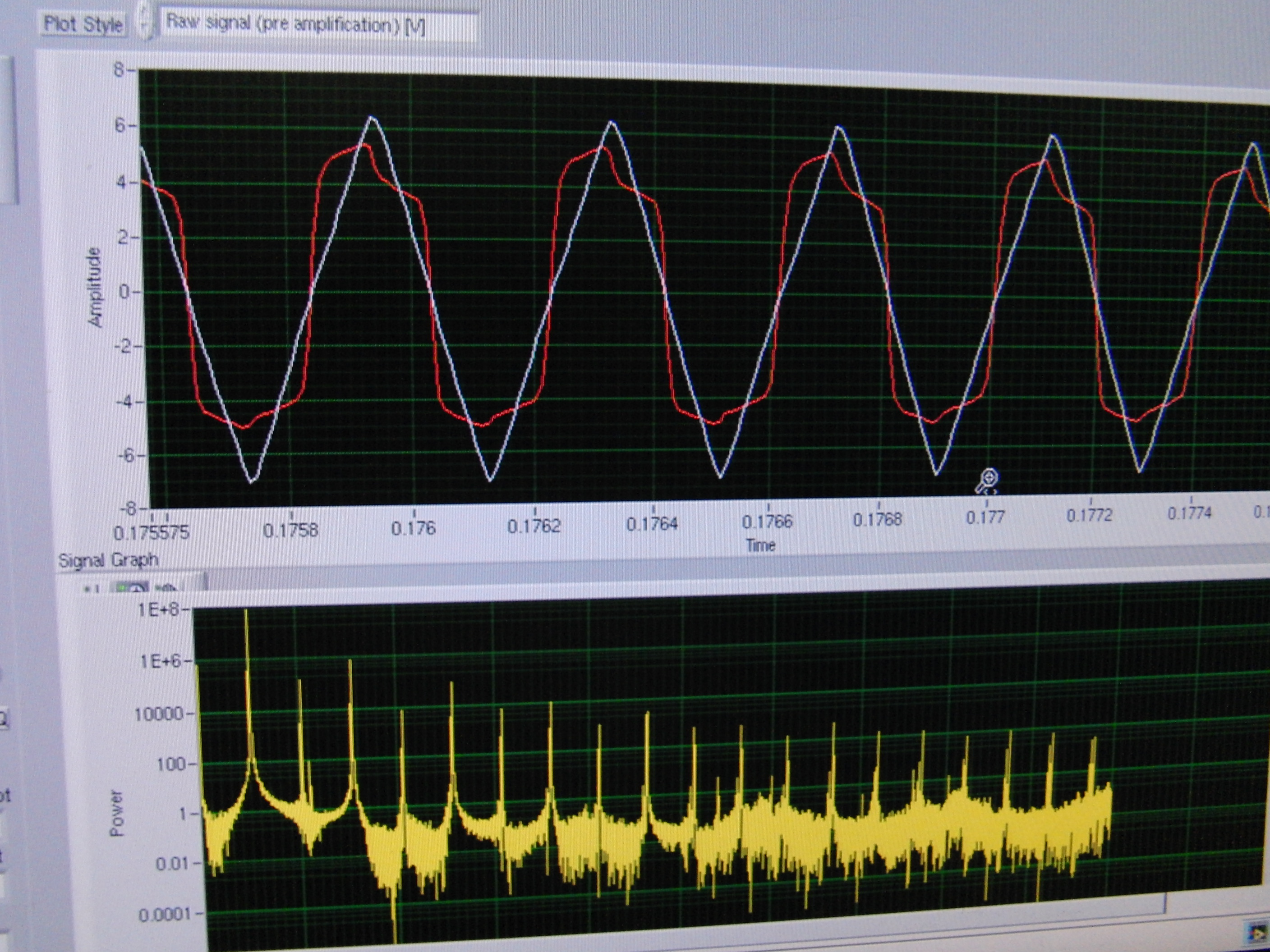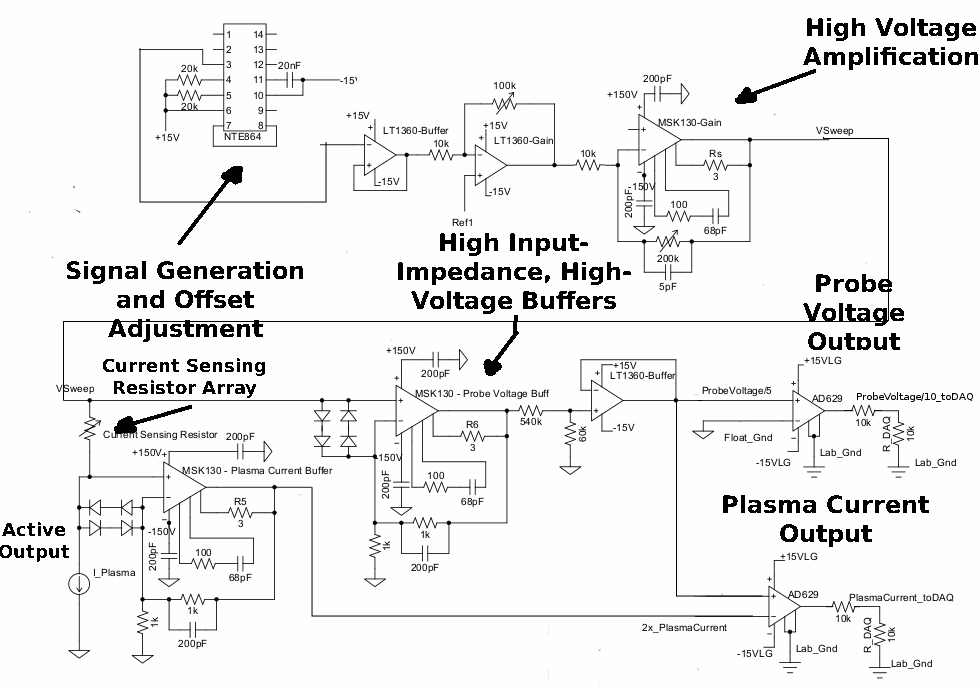Project Description
I played a central role in the development, testing, and analysis of the custom emissive Langmuir probe used in this project. My work primarily focused on the design and implementation of a high-speed sweeping circuit to measure electron temperature profiles with improved accuracy compared to cold probes. This circuitry enabled the probe to sweep across a range of plasma potentials within microseconds, ensuring measurements that outpaced the natural fluctuations in the plasma.
I also worked closely on overcoming challenges related to probe biasing and grounding, which is critical in helicon plasma experiments like those performed in HelCat - a dual source helicon / cathod plasma device. Ensuring that the probe's potential did not disturb the plasma or cause measurement errors was a key hurdle that I helped address through circuit redesign and careful data comparison.
During the experiment, I managed the data collection, using both fast sweep circuits and more traditional methods with Kepco BOP amplifiers. This dual approach allowed me to verify the probe's performance while debugging the more advanced sweeping setup. My work confirmed significant plasma potential shifts and highlighted the challenges of grounding ambiguities.
In analyzing the results, I found that emissive probes provided better data on plasma potential than cold probes, reinforcing the importance of electron emission for accurate measurements. Additionally, the emissive probe demonstrated potential as a plasma source, emitting fast ionizing electrons and showing beam-plasma interactions that could be valuable in future dual-source plasma studies.
Image Gallery




